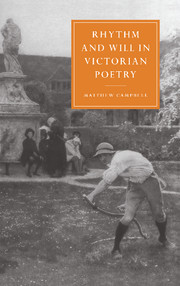Preface and acknowledgements
Published online by Cambridge University Press: 22 September 2009
Summary
Discussing the inappropriateness of Gerard Manley Hopkins' use of the word ‘counterpoint’ as a musical analogy for ‘the relation between iambic norm and rhythmic actuality’, John Hollander reminds us that any would-be ‘clarifier of the talk of prosodists … would try to illuminate the ways in which linguistic and conceptual habit produced garbled descriptions of prosodic events nevertheless clearly and effortlessly perceived and understood’. This is a reassurance not only to those who find Hopkins’ own metrical practice ‘garbled’, but also to those who have difficulty perceiving rhythm at all. Whatever the method of description, all the prosodist is describing is the perception, in which all who listen may share.
The habit of listening to the rhythms of poetry has passed from the skills imparted to many students and scholars of poetry alike. Consequently, I have attempted to scan the rhythms of the poems discussed in this book with a methodology derived from the classical model which ‘the talk of prosodists’ has declared to be a limited means of describing the dominantly accentual-syllabic rhythms of English poetry. Alternative scansions of some of the poems described here could be supplied by applying the Trager-Smith system of scansion, according to four degrees of stress, which important books on the rhythm of English by Derek Attridge and Philip Hobsbaum have adopted.
- Type
- Chapter
- Information
- Rhythm and Will in Victorian Poetry , pp. xi - xiiiPublisher: Cambridge University PressPrint publication year: 1999



